A coffee table sits at the heart of the living room, quietly shaping the atmosphere of the entire space. The way it is arranged can make a room feel curated, balanced, and inviting. While Part 1 explored fundamental approaches, this second guide dives into advanced arrangements that add character, personality, and refinement. Each idea focuses on practical styling that works in real homes.
1. Layered Heights with Nested Objects
Visual movement makes a table instantly more engaging. Start by placing a low bowl, then add a medium height candle holder, and finish with a tall glass cloche holding a decorative object. The variation in height creates rhythm, while intentional spacing prevents clutter. This arrangement works well on both large wooden tables and smaller glass tops.
Extra tip: keep the tallest piece slightly off center so the setup feels natural. Avoid items that are too tall and block conversation across the table. Clear glass or open form designs keep the look light instead of heavy.
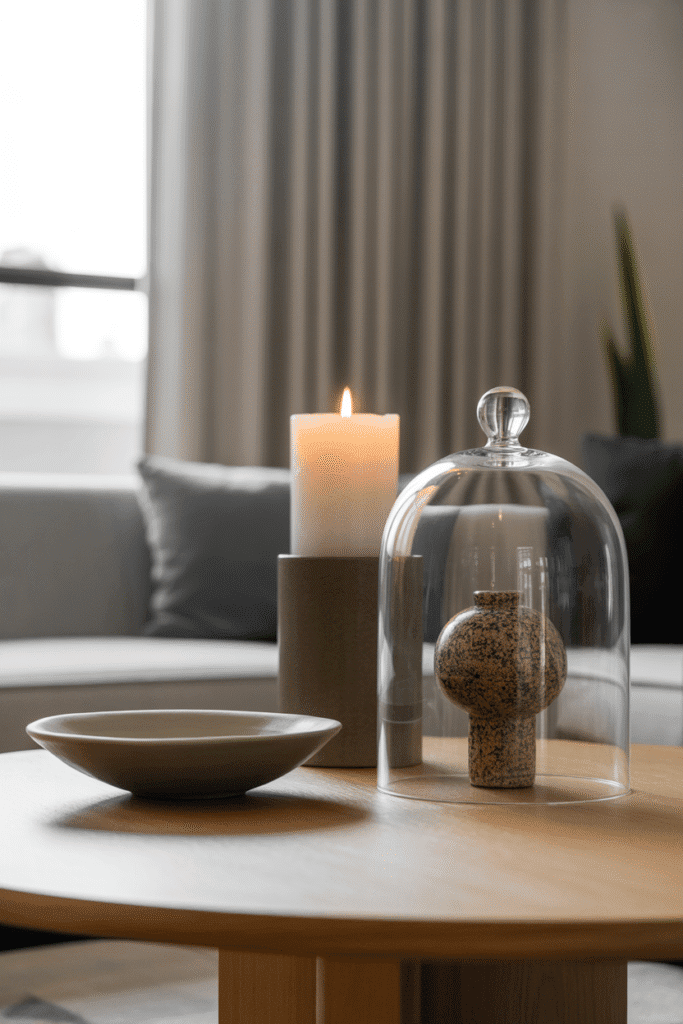
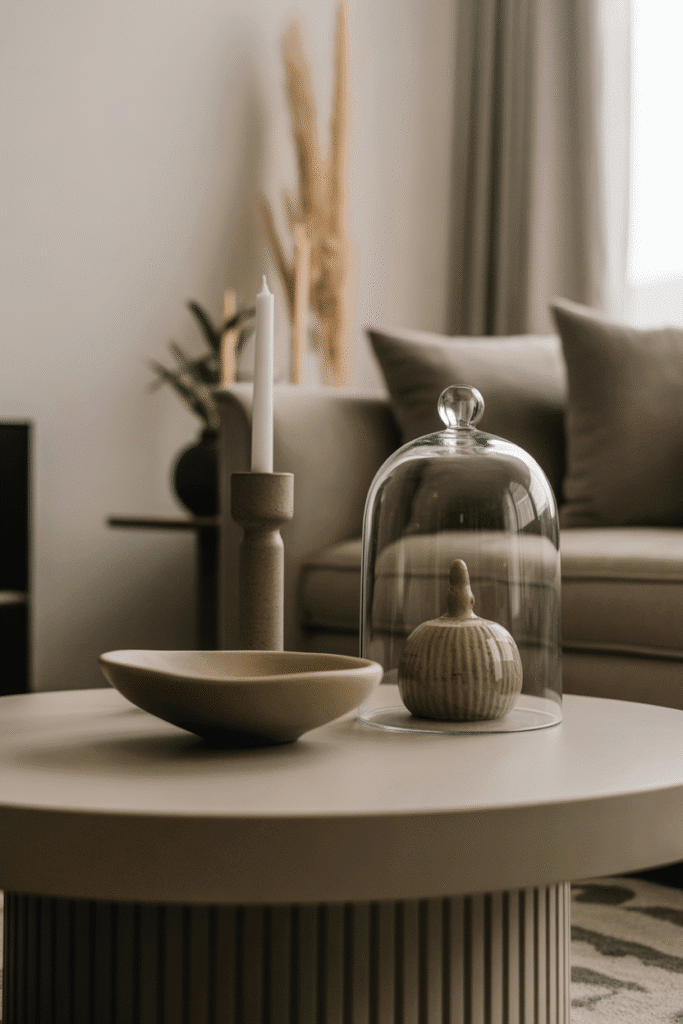
2. Dual Toned Contrast Setup
Strong color pairings anchor a table without overwhelming the room. Select two dominant tones already present in your décor. A black stone tray paired with brass candle holders or a white ceramic dish balanced by deep navy books are striking examples. The pairing feels intentional, keeping the table bold yet controlled.
If your living room has a neutral base, use the table to introduce a pop of color. Metallic tones such as brass or silver work well with matte finishes for extra depth. Using repetition of the same two tones across objects strengthens harmony.
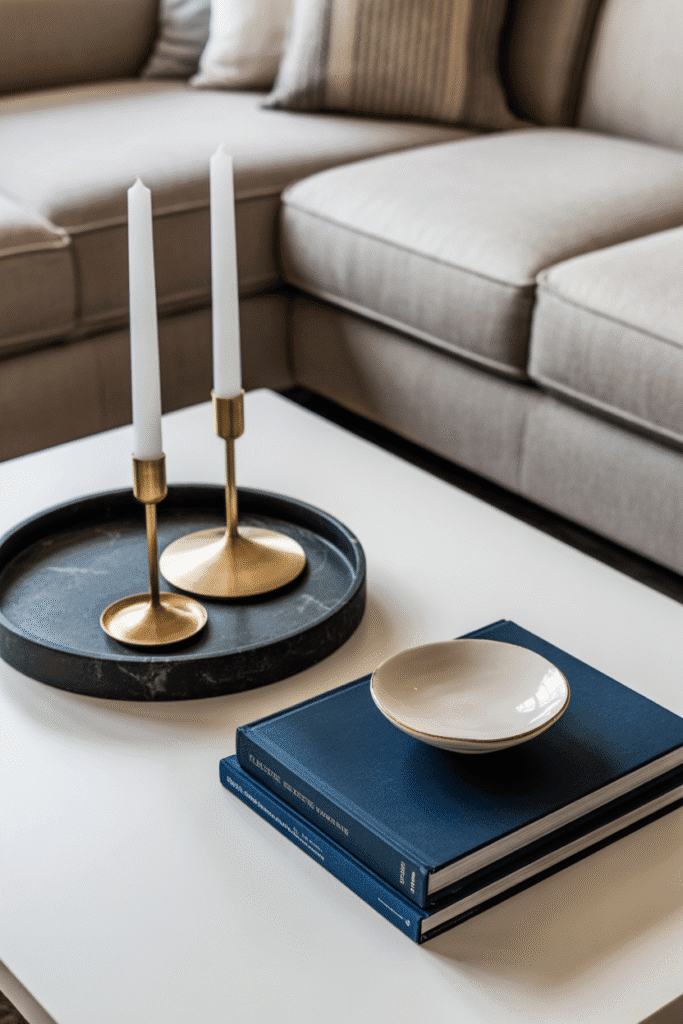
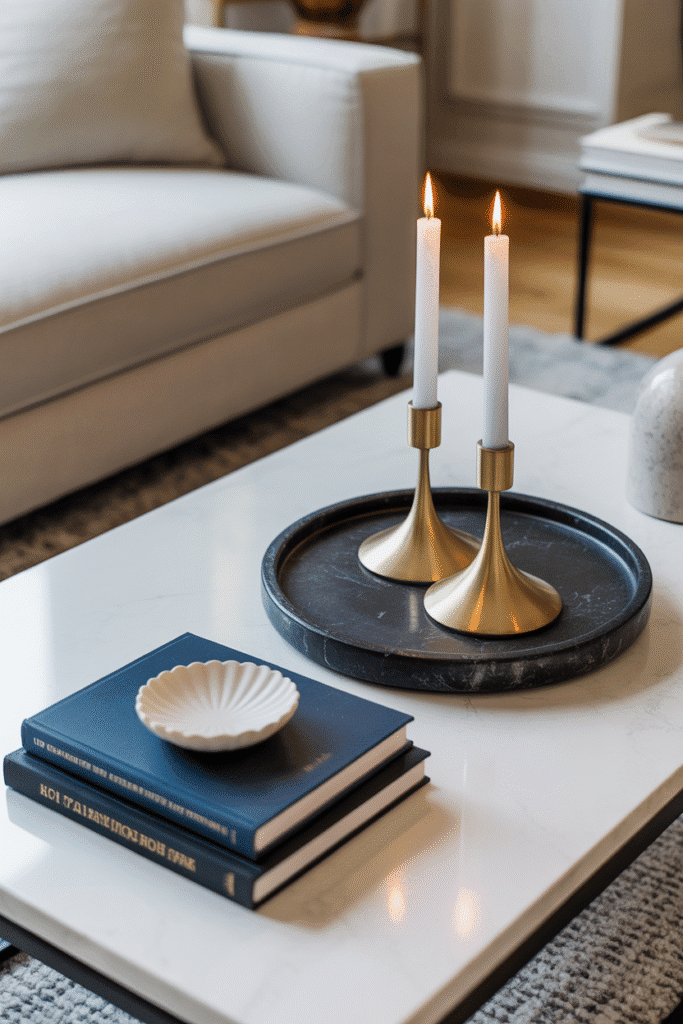
3. Greenery in Multiples
Instead of relying on one large plant, try a cluster of three small potted greens. Use uniform containers for cohesion, but stagger their placement for movement. Succulents or small ferns bring a fresh look while staying low maintenance. This approach suits coffee tables in both minimalist and cozy interiors.
Vary the leaf shape for added interest by mixing spiky succulents with rounded leaves. Place one plant closer to the edge to create a layered perspective. For extra texture, use terracotta or stone pots instead of glossy finishes.
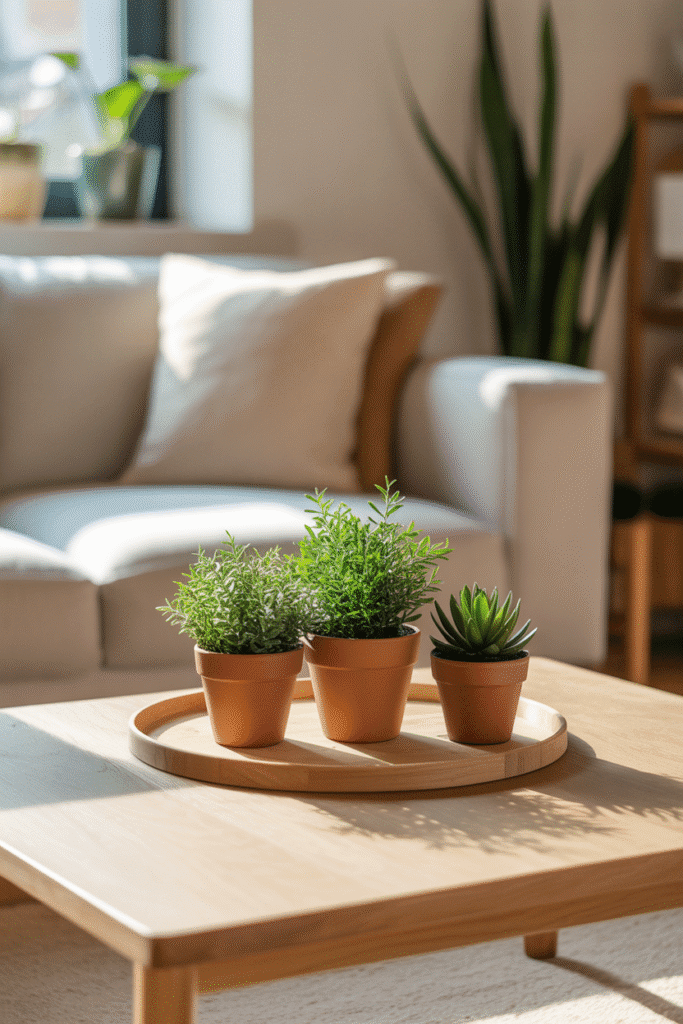
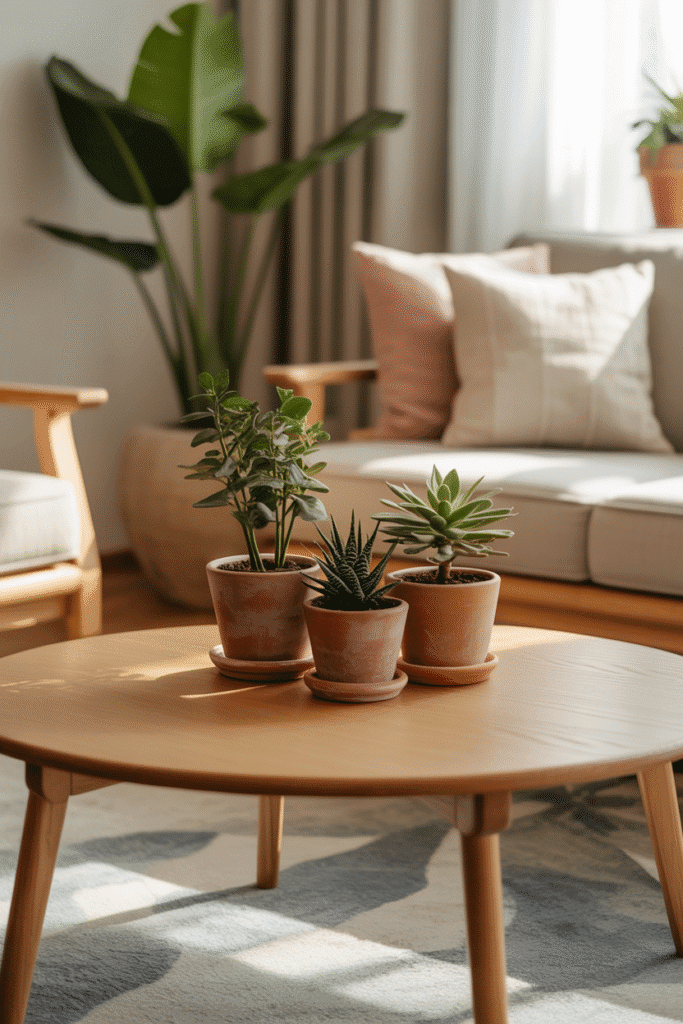
4. Art Object Spotlight
Sometimes one piece is enough. Place a sculptural object such as a hand blown glass orb or a ceramic figure at the center of the table. Frame it with subtle items such as slim coasters or a shallow tray. This lets the art piece take the lead, making the table a conversation starter.
Choose an object that ties into your room’s overall theme or story. Lighting matters, so place it where natural light can highlight its form. Keep surrounding décor simple so the art does not compete for attention.
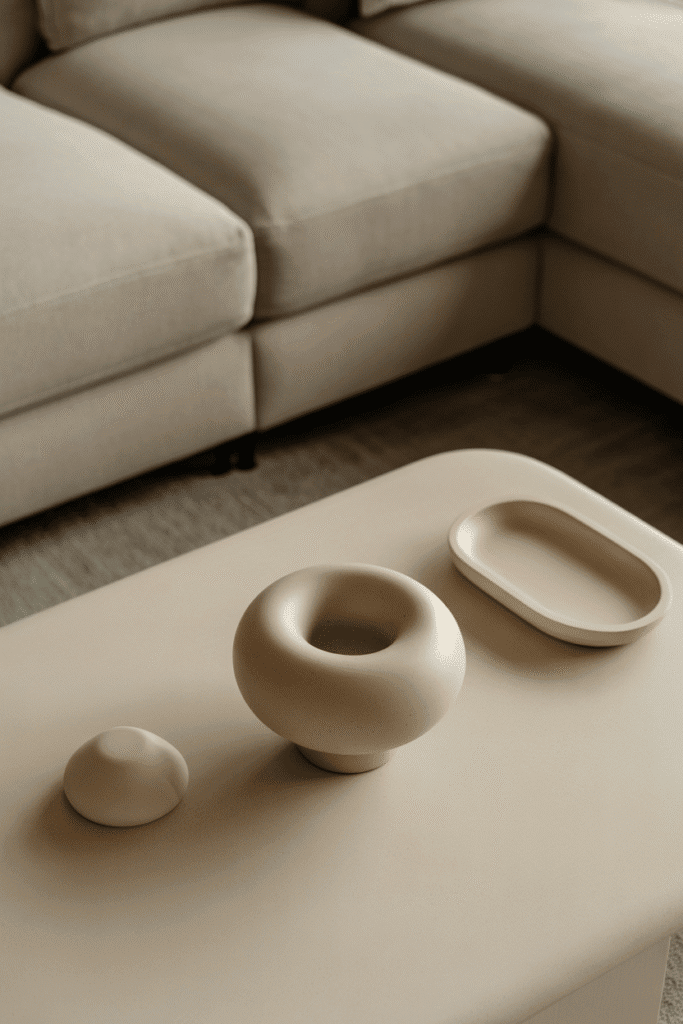
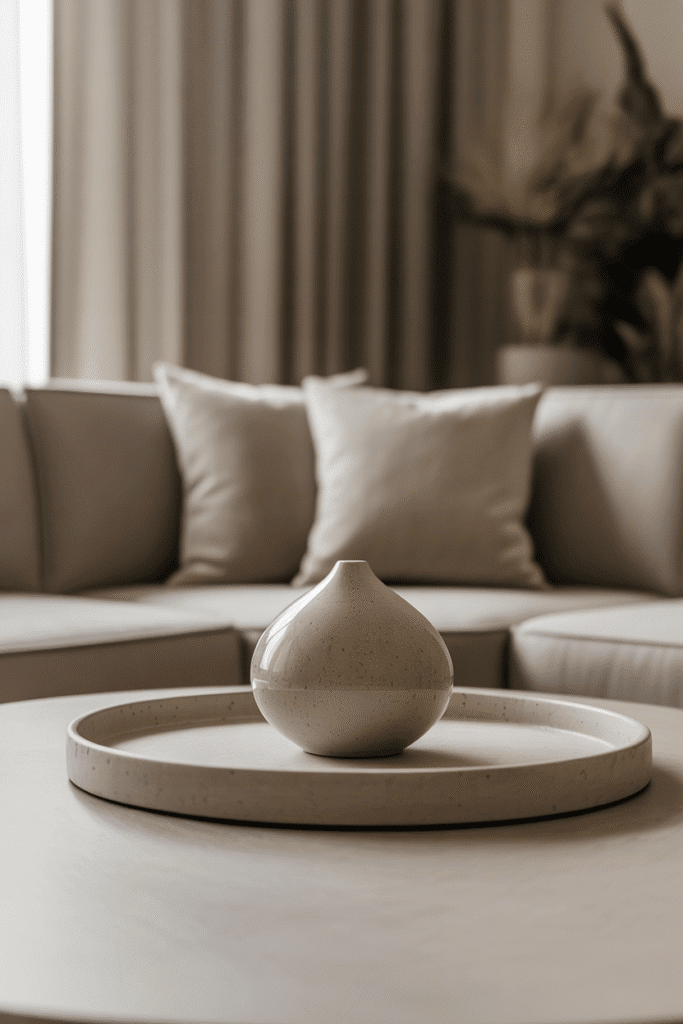
5. Textured Mix Display
Texture is as important as color. Combine matte ceramics, glossy glass, woven baskets, and polished stone in a single layout. A rattan coaster set beside a marble bowl and glass candle holder creates depth, even with neutral colors. This idea is especially effective for plain wooden tables that need added dimension.
Keep the tones consistent so the mix feels cohesive rather than chaotic. Layer items of different finishes side by side to emphasize contrast. Rough and smooth textures next to each other make the table feel tactile and inviting.
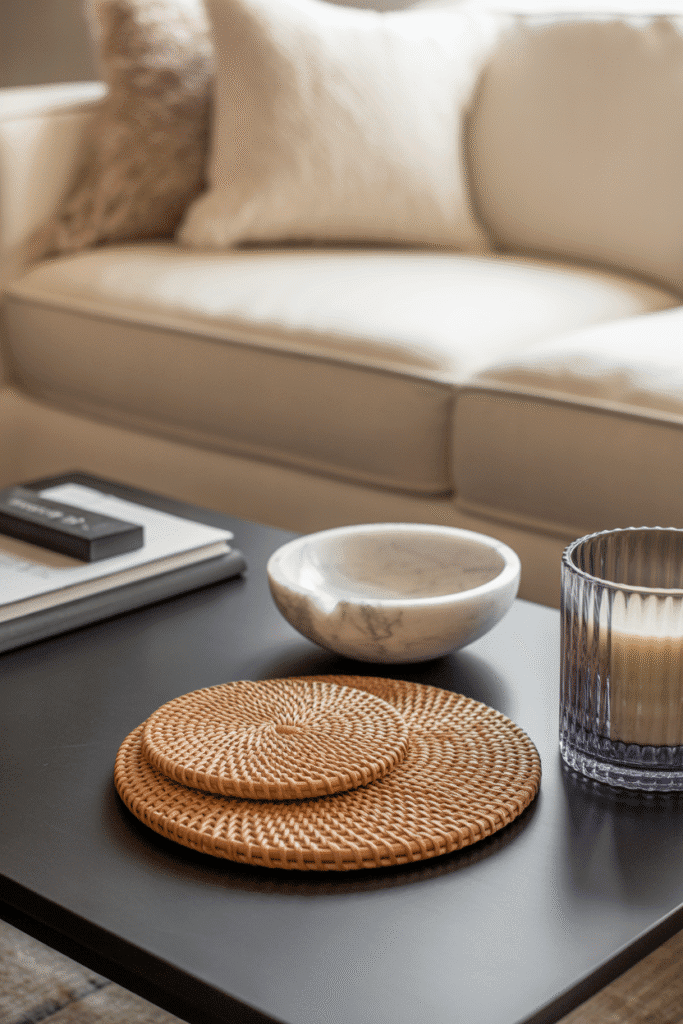
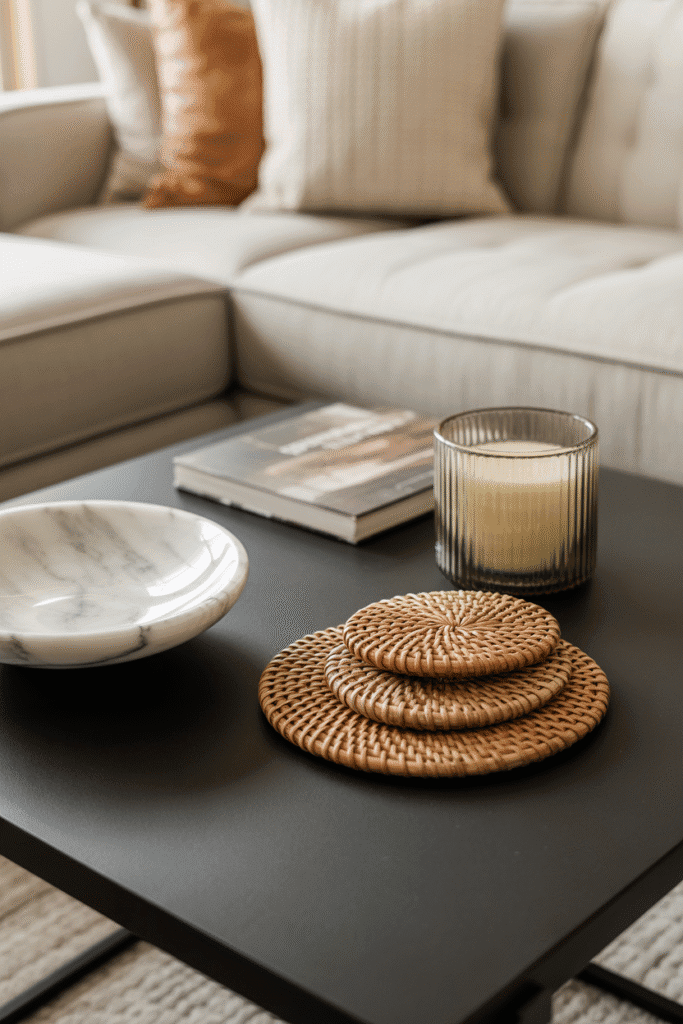
6. Books with an Accent Object
A stack of books is a coffee table classic, but topping it with a distinctive piece gives the setup presence. Place two or three hardcovers, then add a carved stone ornament, a brass knot, or a small sculpture on top. The books provide structure while the object adds personality.
Choose books with covers that complement your room’s palette. A vertical stack can be placed nearby to vary direction and add movement. Swapping the accent object seasonally keeps the setup fresh and relevant.
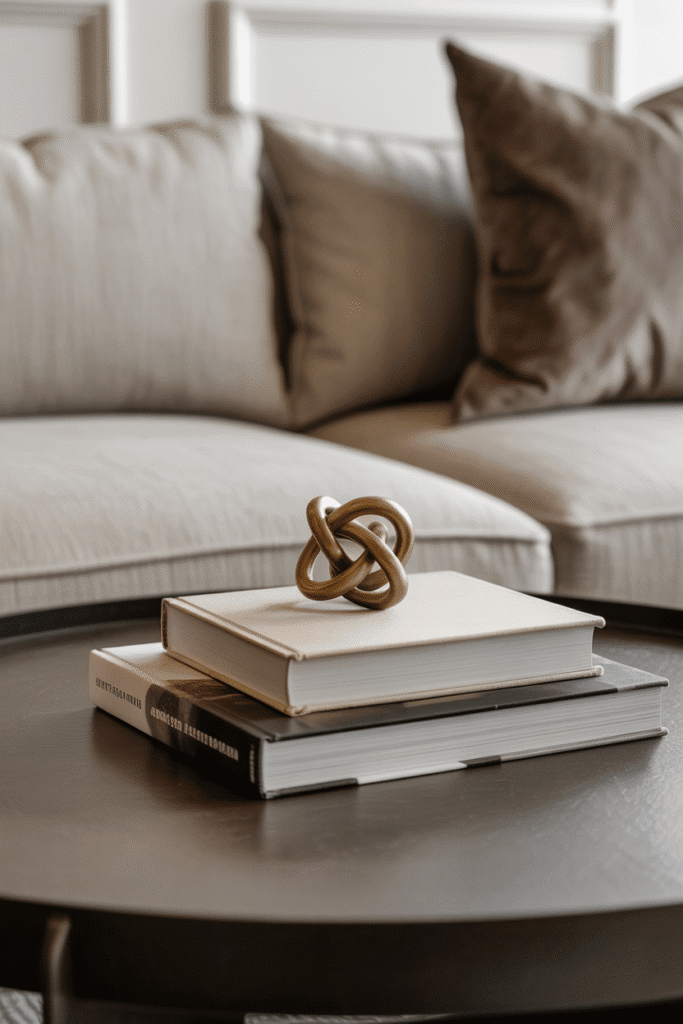
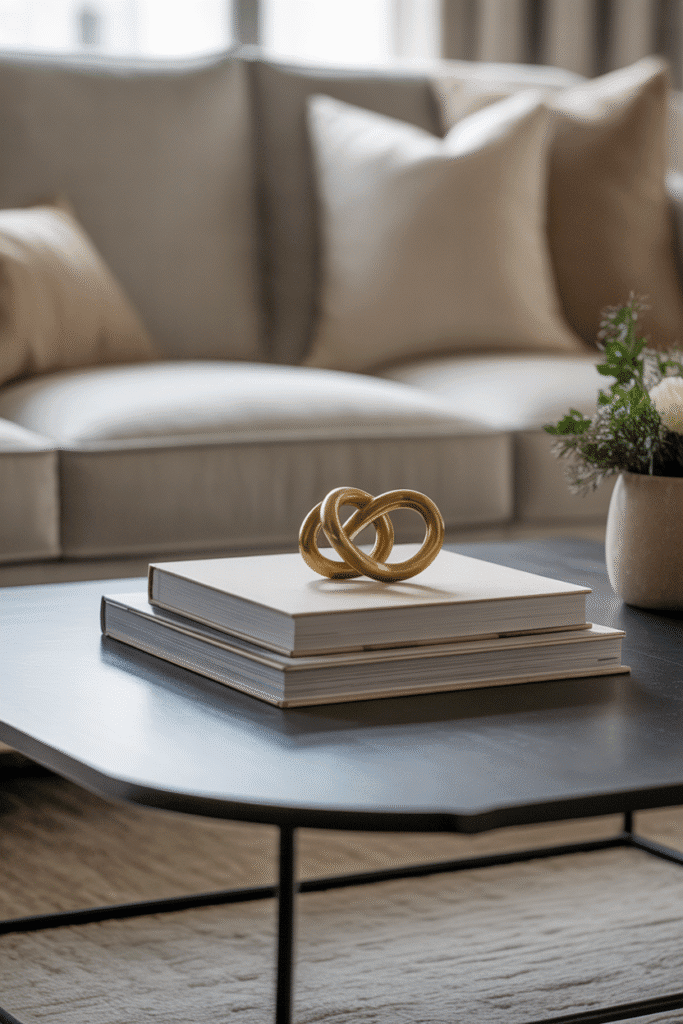
7. Candle Cluster Arrangement
Candles bring warmth, and when grouped, they create intimacy. Use three to five candles of varying shapes but in the same color family. Cluster them on one side of the table, and balance the opposite side with a bowl or tray. This setup is perfect for relaxed evenings when atmosphere matters most.
Mix pillar candles with tea lights to create layers of glow. Choose unscented for dining areas and scented for living zones. Place the cluster on a heat safe tray to protect the table while keeping it polished.
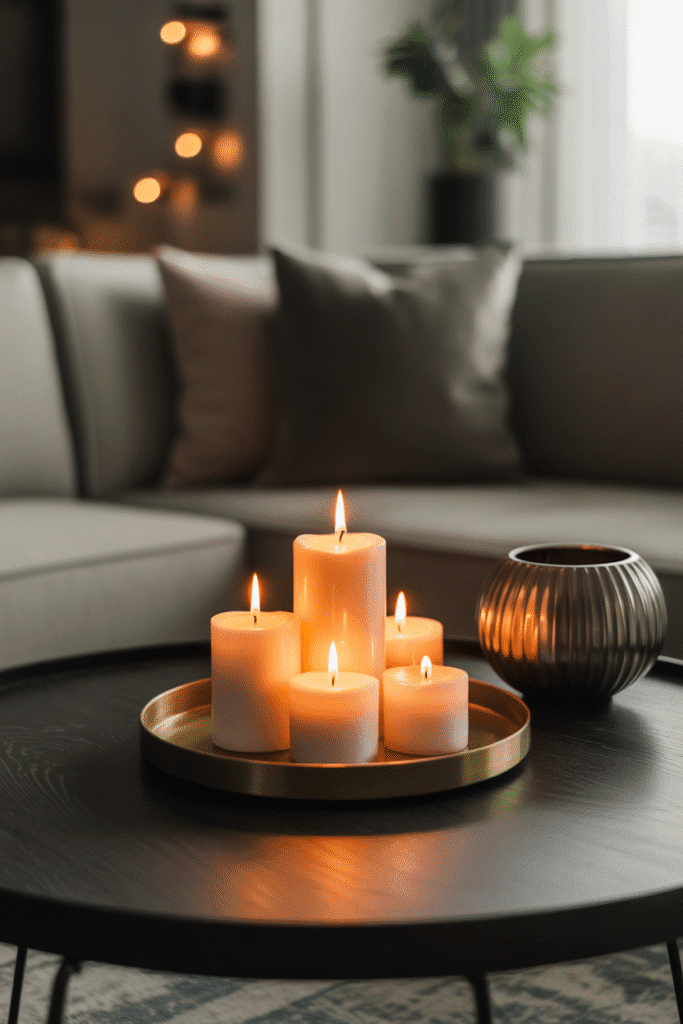
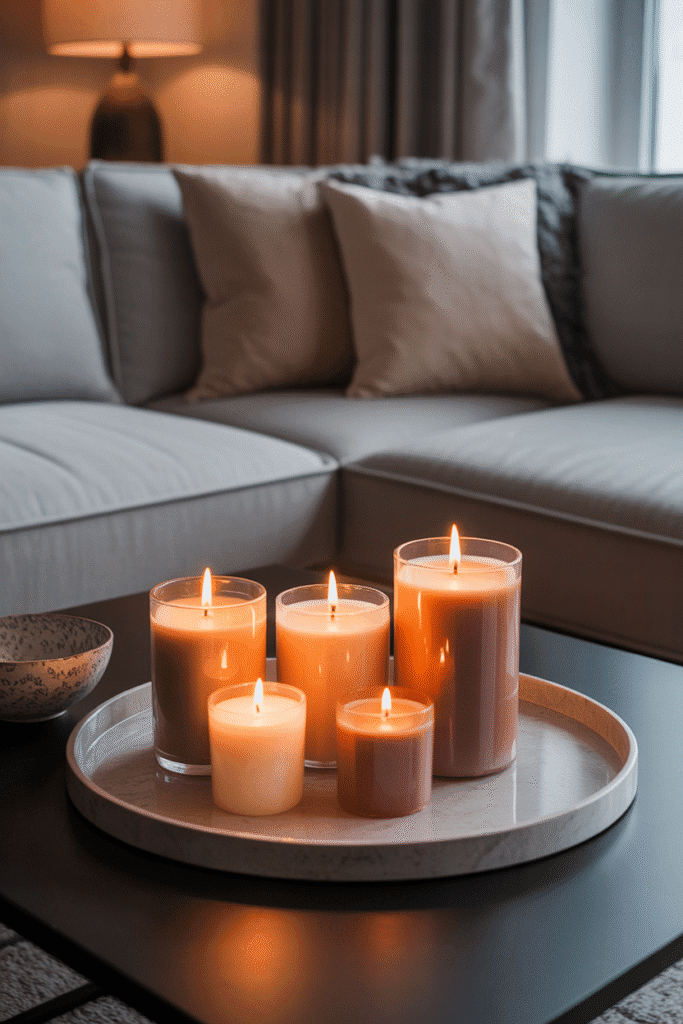
8. Tray within a Tray Styling
Organization can be stylish when layered thoughtfully. Start with a large base tray to frame the arrangement, then add a smaller tray inside to hold essentials such as coasters or matches. Place a taller vase or diffuser behind the trays for contrast. This approach creates order while adding dimension.
Using contrasting tray materials adds interest, such as marble inside wood or lacquer inside rattan. Keep at least one empty corner of the outer tray to avoid looking crowded. This setup works especially well on oversized coffee tables where zoning matters.
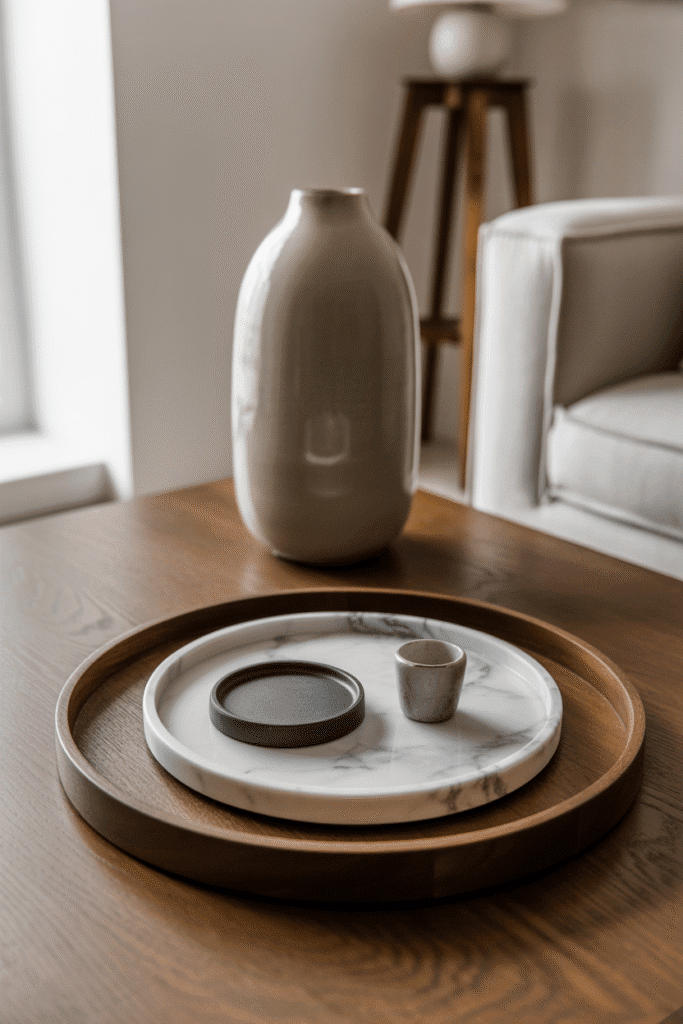
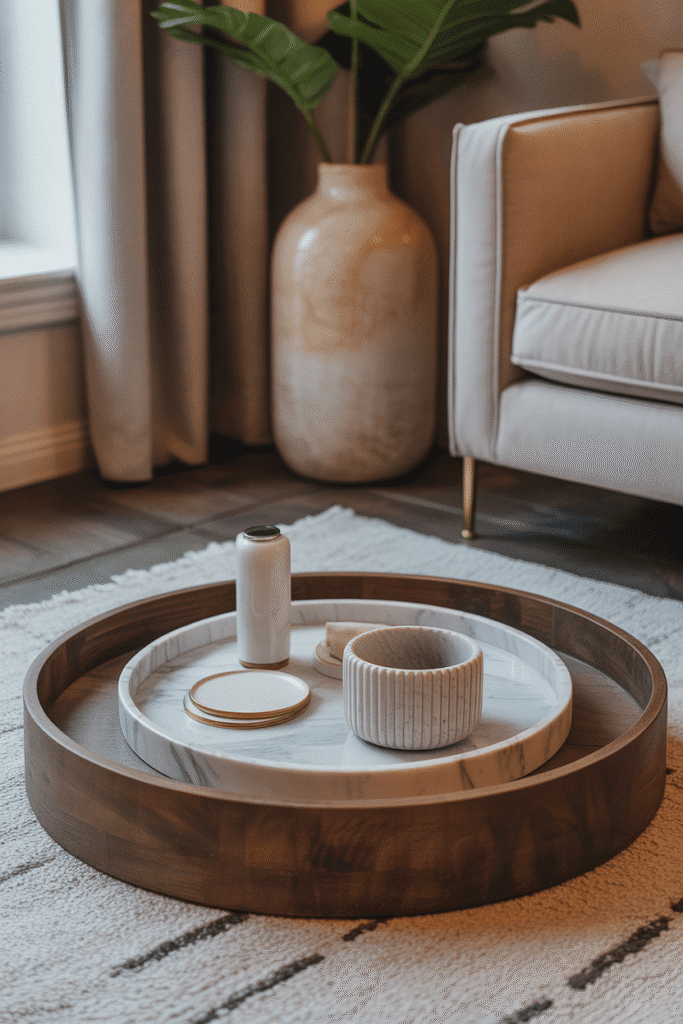
9. Global Influence Arrangement
Let your coffee table tell a story. Anchor the layout with a travel inspired piece such as a Moroccan lantern, a Japanese tea bowl, or a carved African beadwork item. Surround it with understated modern accents to let it stand out. This design adds personality and makes the table feel both curated and meaningful.
Rotate objects from your travels to keep the story evolving. Use supporting pieces in neutral tones so the cultural item remains the star. Mixing one handcrafted object with two sleek accessories balances tradition with modern living.
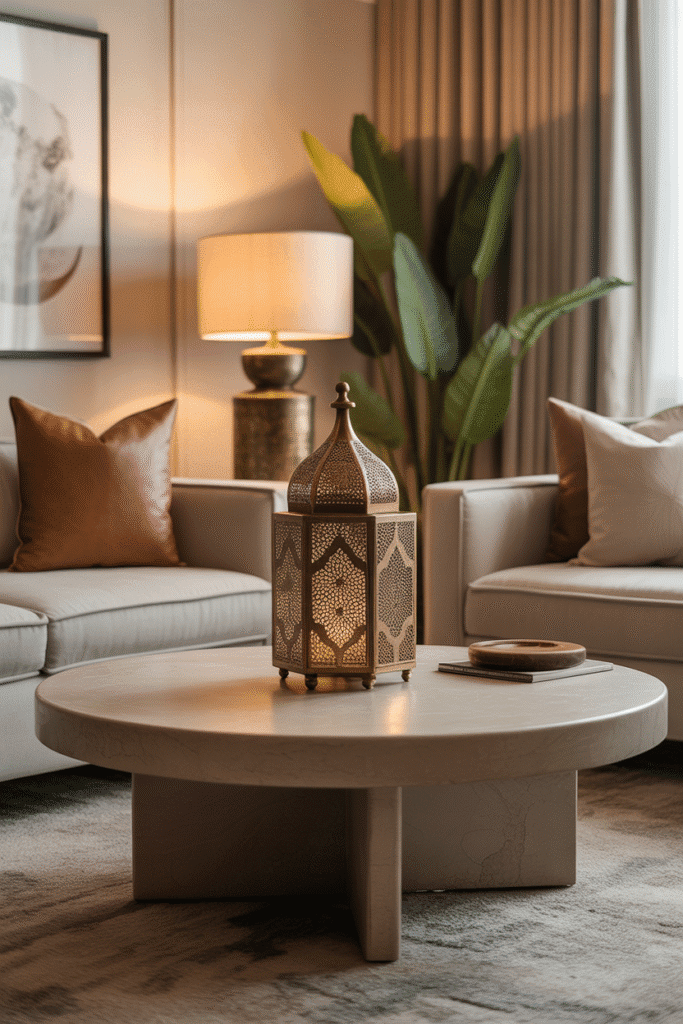
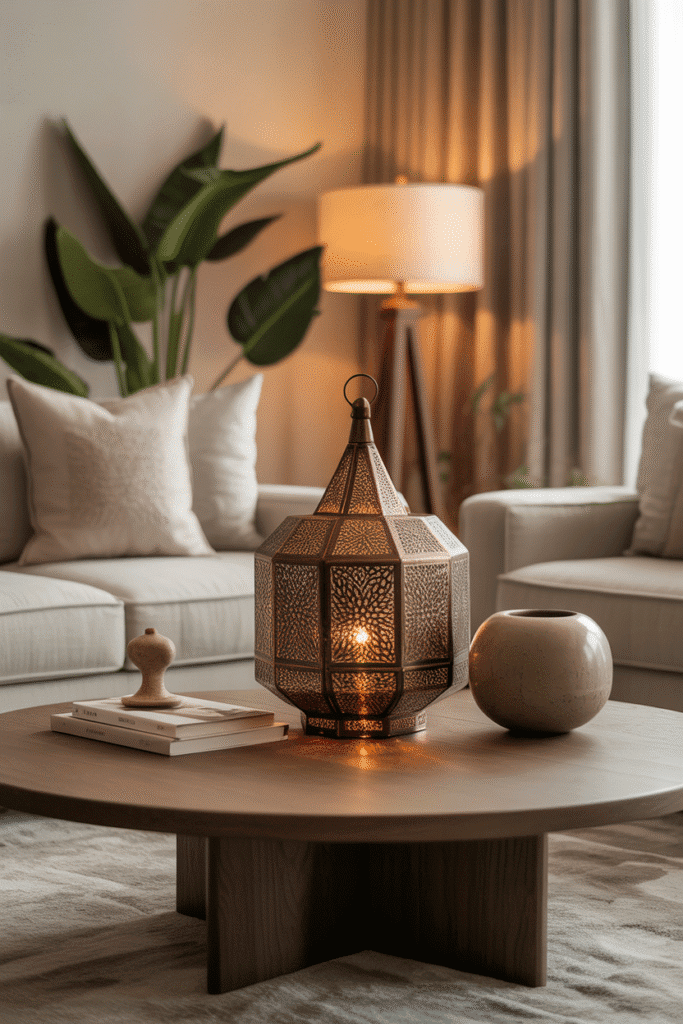
10. Everyday Elegance Setup
A coffee table in daily use can still look refined. Use a lidded box for remotes, a shallow dish for keys, and one decorative piece such as a sculptural candle. By keeping surfaces functional but intentional, the table stays organized without sacrificing charm. This approach works especially well in family living rooms.
Opt for storage pieces in natural finishes to avoid a utilitarian look. Keep proportions small so the table does not feel weighed down. Rotate the single decorative item frequently for a quick refresh without changing the entire layout.
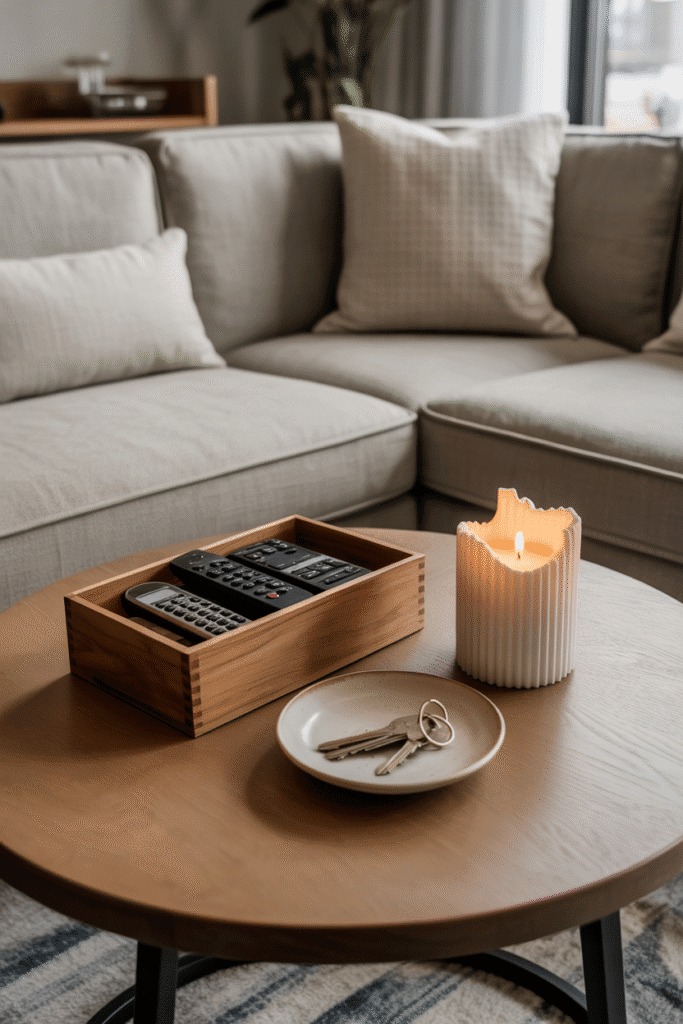
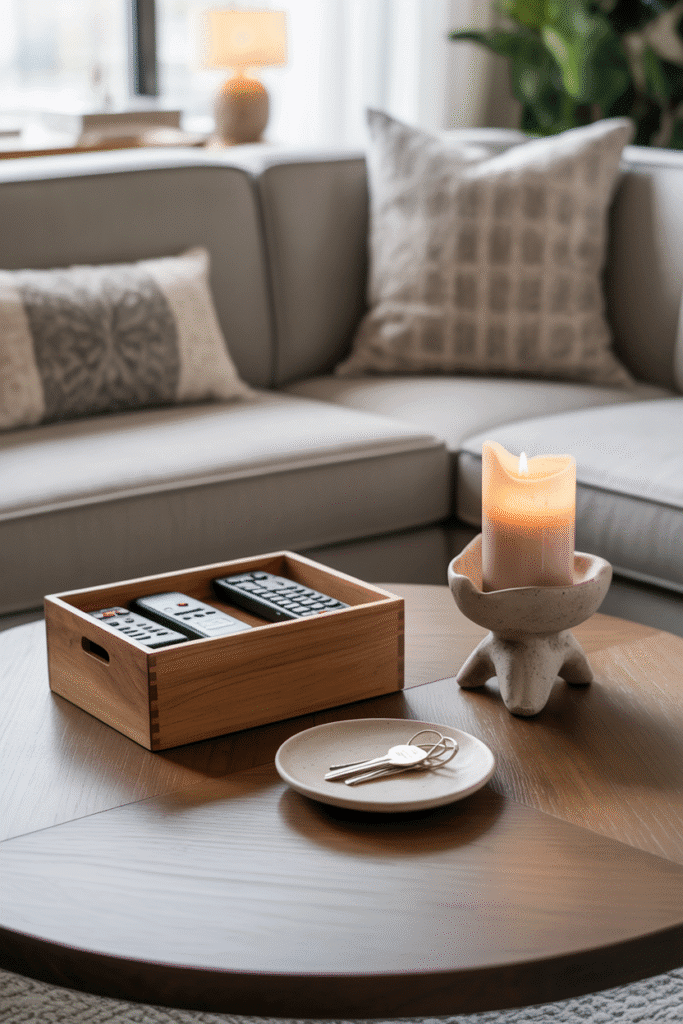
Final Thoughts
Arranging a coffee table is about more than looks. It is about balance, rhythm, and personality. These ten ideas expand on the basics by offering ways to mix function with design, add visual depth, and let personal touches stand out. Whether you prefer a sculptural centerpiece or a practical setup, these layouts can turn a simple surface into the highlight of your living room.
